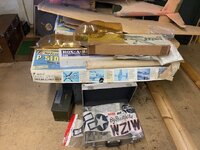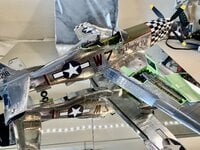- Thread starter
- #61
bdefen
Senior Airman
Got my Dumas balsa Storch started late January. Have pretty much finished the assembly of the wing, horizontal/vertical stabilizer, and fuselage. Since a flying model is not my primary goal (but I may give it a try), I've been adding reinforcing gusseting, extra stringers, and some solid sheeting to reinforce or replace the very delicate 1/16 square stringers. I've fractured a few with an errant grip hear and there. My reinforcing has added some weight, but it's certainly a lot sturdier.Show us the Storch as you build it. Ask questions if you hit a snag.
The wing was an enjoyable challenge, mainly in setting the dihedral, and bending and installing the reinforcing wire. Until it's covered, installed, and braced, the wing will be somewhat delicate. My rather rough gusseting of the vertical stabilizer will detract from the overall look of the piece when the tissue is shrunk and painted. I'm thinking of perhaps covering its framework with heavy paper or light cardstock before placing the tissue in the hope of hiding my rough gusseting. I could certainly use any suggestions or advice here.
Lots of sanding left to do. After placing the tissue, the next big challenge will be bending the .014" wire to the proper shape for constructing the landing gear. That step occurs after the tissue covering, before assembling the wing, fuselage, stabilizer, etc.
Oh, I couldn't find any Titebond 3 in a quick shopping errand, so I went with Elmer's Wood Glue Max.
Seems fine.
Thanks in advance for any advice.
Attachments
-
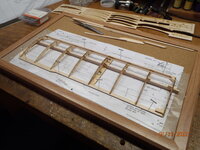 1 Left Wing 1-31-22.JPG1.2 MB · Views: 95
1 Left Wing 1-31-22.JPG1.2 MB · Views: 95 -
 3 Setting the dihedral 2-4-22.jpg1.6 MB · Views: 97
3 Setting the dihedral 2-4-22.jpg1.6 MB · Views: 97 -
 4 Wing completed 2-7-22.jpg1.5 MB · Views: 101
4 Wing completed 2-7-22.jpg1.5 MB · Views: 101 -
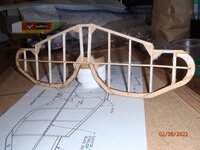 5 Horizontal Stablizer 2-8-22.jpg1.1 MB · Views: 86
5 Horizontal Stablizer 2-8-22.jpg1.1 MB · Views: 86 -
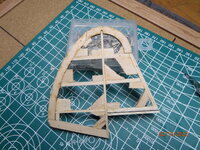 6 Vertical stablizer 2-13.JPG2.1 MB · Views: 94
6 Vertical stablizer 2-13.JPG2.1 MB · Views: 94 -
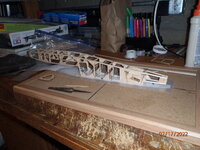 8 Fuselage frame constr 2-18-22.JPG1.4 MB · Views: 92
8 Fuselage frame constr 2-18-22.JPG1.4 MB · Views: 92 -
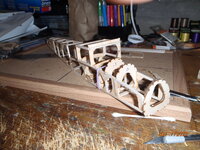 10 Fuselage frame constr 2-18-22.JPG1.6 MB · Views: 91
10 Fuselage frame constr 2-18-22.JPG1.6 MB · Views: 91 -
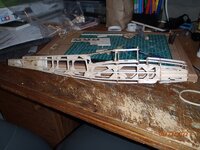 11 Fuselage completed 2-22-22.jpg1.6 MB · Views: 93
11 Fuselage completed 2-22-22.jpg1.6 MB · Views: 93 -
 12 Fuselage completed 2-22-22.jpg1.5 MB · Views: 94
12 Fuselage completed 2-22-22.jpg1.5 MB · Views: 94

